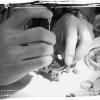-
Recently Browsing
- No registered users viewing this page.
-
Topics
-
Posts
-
By watchweasol · Posted
Hello and welcome to the forum, Richard will sort it out for you. -
Wait, am I reading this correctly?? So, the former head of Rolex technical department suggests (in the last paragraph of your pictures) that - paraphrasing: If you put a mainspring that is too strong (1st mistake), just file off bits of the pallet fork horns to avoid knocking ??? The Rolex master must be one of the greatest watch destroyers then, hahaha.
-
By RichardHarris123 · Posted
@Marc, where did you get the sleeve from, I've looked and couldn't find them in the UK. -
That makes sense. Thank you all for taking the time to help me sort this out. It appears that the listing @mikepilk posted is the correct item. Much appreciated and cool to briefly step into a niche community and find it so supportive
-




.thumb.jpg.cb17a66989f1e796fd4217db2e9ca9df.jpg)

Recommended Posts